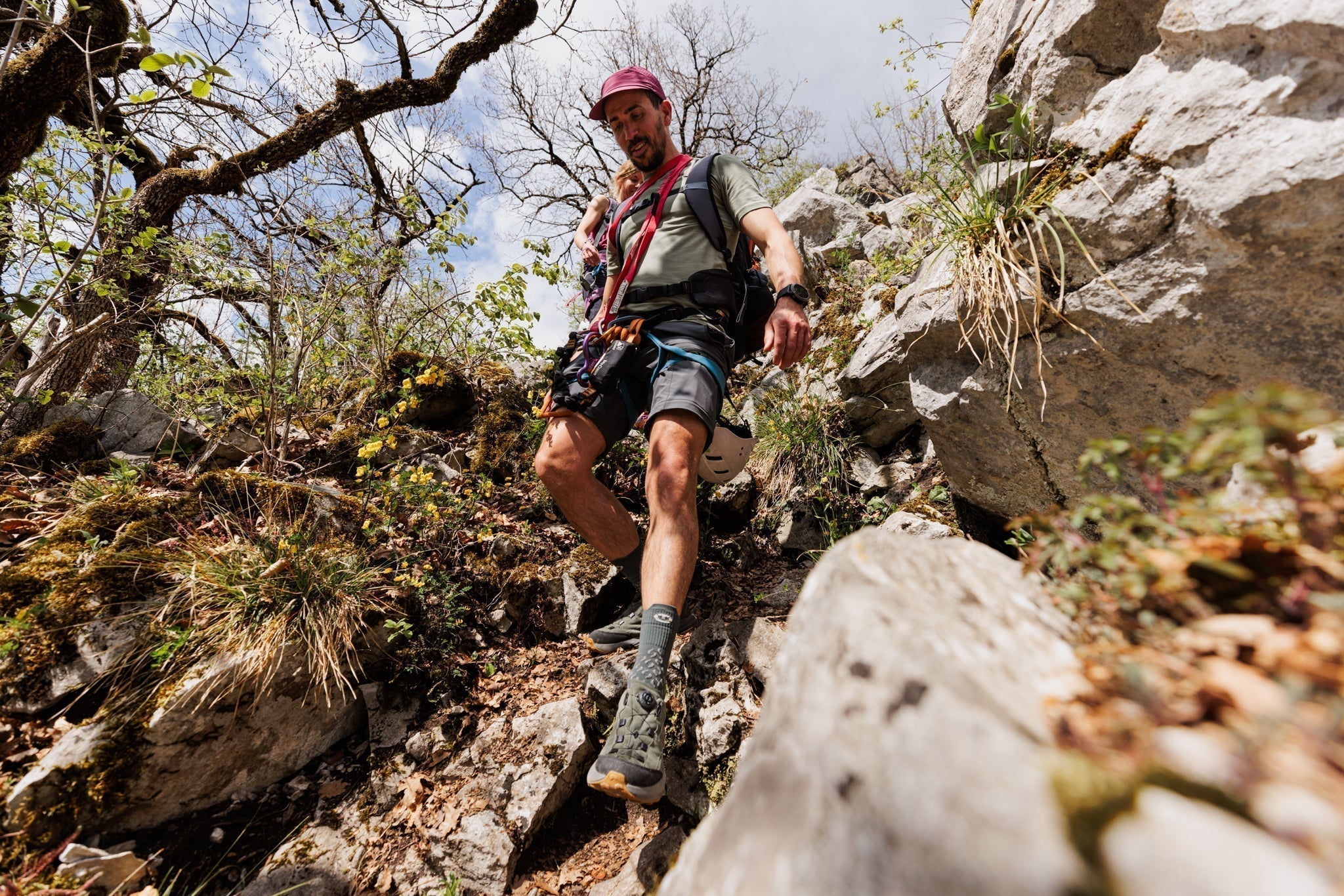Nothing ruins a great day in the mountains more than painful blisters on your feet. Fortunately, they can be avoided with a few simple steps and the right equipment!
In this article, we give you the best tips for preventing blisters while hiking and walking comfortably, mile after mile.
From choosing shoes to preventive care for your feet, discover how to hike without pain and fully enjoy your outing.
1. Choose the right hiking shoes
Let's start with the basics: choosing the right shoes is essential to avoid blisters.
Here are some criteria to consider:
➜ Size: A shoe that is too small or too big is one of the main causes of blisters. Make sure your toes do not touch the end of the shoe and that there is a slight space to avoid excessive friction.
➜ Support: choose shoes that offer good ankle support and a sole suitable for uneven terrain.
➜ Breathing: Your feet must remain dry to avoid friction. Shoes made of breathable materials reduce humidity and the risk of blisters.
Remember to test your shoes before a long hike. Wear them on short outings to make sure they fit you perfectly.
2. Prepare your feet before hiking
A few days before your outing, it is important to start preparing your feet to avoid blisters and other inconveniences. Here are some practical tips for taking care of them:
➜ Moisturize them: apply a moisturizer a few days before the hike to soften the skin and prevent chafing.
➜ Trim your nails: Nails that are too long can cause friction and increase the risk of injury. Make sure they are trimmed properly.
➜ Use anti-perspiration powder: A thin layer of foot powder can help reduce moisture and friction in your shoes.
3. Choose the right socks
Although they are sometimes overlooked, socks play an important role in preventing blisters and investing in a good pair is far from being a superfluous purchase.
➜ Invest in technical socks: choose socks specially designed for hiking, made with materials that wick away moisture and provide extra cushioning in sensitive areas (heel, toes).
➜ Avoid cotton: Cotton retains moisture, which can lead to blisters. Choose synthetic or merino wool materials, which keep your feet dry.
➜ Choose double thickness: some socks are designed with a double layer to limit friction between the skin and the shoe.
4. Take breaks
The way you walk also influences your risk of blisters. To reduce friction:
➜ Tighten your laces properly: proper lacing prevents your foot from moving too much in the shoe, which reduces friction.
➜ Take breaks: During long hikes, don't hesitate to take breaks to rest your feet, change your socks if necessary and check for any rubbing points.
➜ Gradually increase the difficulty and length of your outings: if you are not used to long distances, start with shorter hikes and gradually increase the duration and difficulty. These precautions are even more important with new shoes.

5. Use blister protectors
To prevent blisters before they even appear, using suitable protections is a good strategy to protect your feet. And above all, always have bandages in your backpack during your outing.
➜ Anti-blister plasters: apply anti-blister plasters to sensitive areas (heels, toes) even before you feel pain.
➜ Hiking tape: this is an adhesive strip that you can place directly on the skin to prevent friction.
➜ Anti-friction creams: certain products, such as Vaseline or specialized creams, can be applied to risk areas to limit friction.
6. React quickly in case of friction
If, despite all these precautions, you feel friction or pain appearing, there is still time to avoid blisters by reacting quickly:
➜ Stop at the first sign: If you feel discomfort, remove your shoes and examine your feet. Apply a bandage or anti-chafing product. If redness appears, there is still time to protect it before a real blister develops.
In summary
Avoiding blisters while hiking is all about careful preparation. Between choosing the right hiking shoes , technical socks , and taking care of your feet before you leave , you'll put all the chances on your side to walk without pain.
Be alert to the first signs of chafing and equip yourself with the right protection to prevent blisters.
With these tips, you can now set off on your adventure, serene and ready to fully enjoy each hike without the slightest discomfort!
To go even further in preparing for your outdoor adventures, discover our other articles on the blog:
➜ The 5 best apps for planning your outdoor activities
➜ How to maintain your hiking shoes?
➜ How to prepare for your hike?
And don't forget to tag us in your best mountain photos with #Kimberteam









